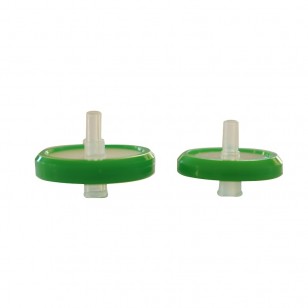How to Choose Right Syringe Filter
Choose the right syringe filter is an essential step for filtration.
Various types of membrane materials used for manufacturing syringe filters.
1. Determine the particle size be
retained or filtered. The Membranes will
keep every particle as similar and more
significant as compared to their defined
pore
size.
2. Assess the chemical compatibility
of the membrane filter with the liquid or gas to be filtered. Consider the chemical
resistance properties of all the parts that will contact the filtrate.
3. Depending on the procedure
performed, the membrane color or surface pattern may be significant.
4. It includes hydrophilic or
hydrophobic membranes with flow rate,temperature,Throughput, and sterilization
requirements.
1.Cellulose Nitrate (CN):
Cellulose Nitrate membrane is a popular
membrane
Which can be
used in an analytical filtration and laboratory filtration. CN membrane
shows good wetting properties and gives the fast
rates of flow with aqueous
Solutions.
2.Mixed Cellulose Ester membrane:
Mixed Cellulose Ester membrane provides a
more uniform and smoother surface
compared to a pure nitrocellulose membrane.
This type of layer is helpful to
count or analyze particles contained in liquids or
captured from aerosols.
3.Cellulose Acetate membrane:
Cellulose Acetate membrane is a
combination
of cellulose triacetate and
diacetate that creates a stable layer in both lateral and
longitudinal directions. Besides,
the membrane has a low static charge, a very low
aqueous extractability, and
excellent solvent resistance to minor weight molecular
alcohols.
4. Polyethersulfone (PES):
It is a membrane of hydrophilic having low
protein
binding. There is no need for external wetting agents
are required, resulting in low
extractables.PES membrane generally
offers a fast flow rate and better chemical
resistance than cellulose acetate
membranes.
5. Nylon membrane:
It is durable,
hydrophilic and highly adjustable with
high
range of the aqueous solutions like alcohols and solvents
used in HPLC work.
6. Glass Microfibre:
Glass Microfiber
filters can be used as a pre-filter for samples
with high particulate content. GMF membranes come with a
higher pore size than
other layers and are tolerant to most solvents.
7. PTFE membrane:
It is robust, highly
porous, and inert to most chemically
aggressive solvents, strong acids, and bases. The backing
material imposes
chemical and thermal limitations.
6.
other layers and are tolerant to most s
olvents.
7.
membrane:
It is robust, highly porous, and inert to most chemically
chemical and thermal limitations.
Apart from these filters, other
membrane filters
material is also available in the




Wow what a Great Information its exceptionally pleasant post. A debt of gratitude is in order for the post.
ReplyDeleteAvast Driver Updater Crack
WinRAR Crack
Pc License Keys
Thanks for such an informative post. You have mentioned the amazing fact. Your articles are always amazing. keep posting!
ReplyDeleteMembrane Filter
Their Nurse Call System has changed the way we provide care. Patients feel more secure knowing their call is answered promptly and efficiently.
ReplyDeleteFor More Details: https://pkmec.com/